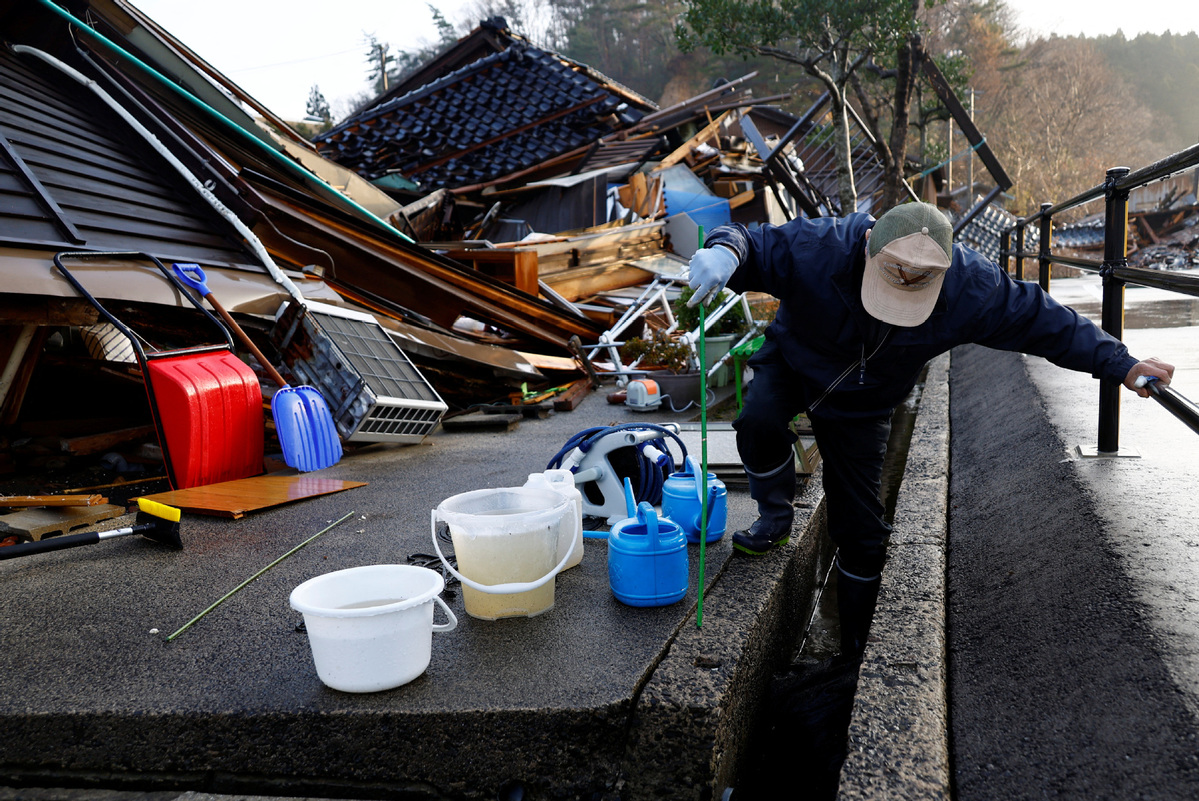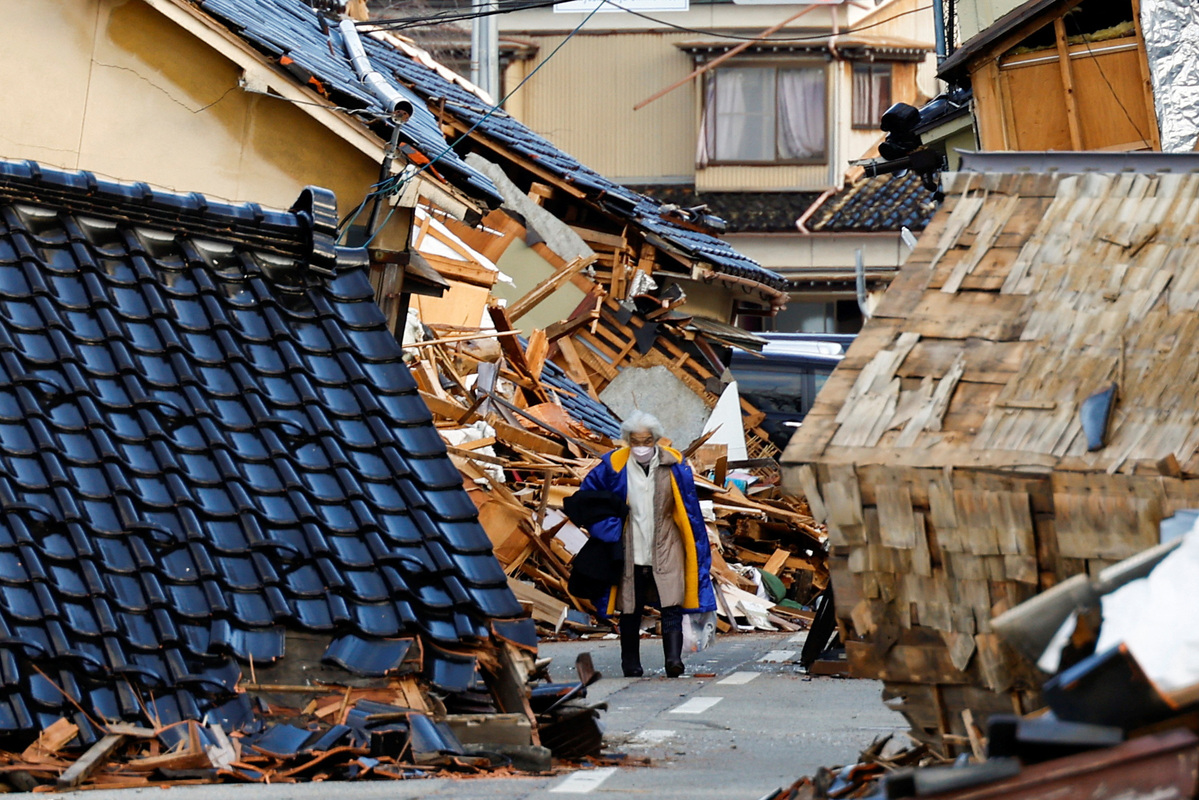
TOKYO - The death toll has risen to 126 in the central Japanese prefecture of Ishikawa after a series of earthquakes of up to 7.6 magnitude struck the prefecture and its vicinity, national broadcaster NHK reported on Saturday citing local authorities.
Meanwhile, 516 people in Ishikawa suffered injuries due to the quakes, with 210 residents in the prefecture still unaccounted for as of 2 pm local time, according to local authorities.
The combination of frequent aftershocks and persistent rainfall poses a dual threat to the affected region, hampering rescue and relief operations and heightening the risk of secondary hazards.
In the latest update from the Japan Meteorological Agency (JMA), a 5.4-magnitude earthquake hit the Noto region at 5:25 a.m. local time on Saturday at a depth of 10 km, measuring upper 5 on the country's seismic intensity scale of 7.
Citing an unprecedented surge in seismic activity in the Noto region following the earthquake, the JMA said over 1,045 earthquakes registering intensity 1 or higher have been observed as of 8 a.m. on Saturday, over twice the total number of similar-intensity temblors recorded in the area over the past three years.
With rain expected on Saturday for the region, the agency also warned local residents to stay alert for possible mudslides and other possible secondary hazards.

On day six of the earthquake, the most-hit coastal city of Wajima confirmed 59 deaths, facing about 100 reports about people being buried and trapped under collapses of buildings.
Japan has deployed its Self-Defense Forces to strengthen their presence from about 5,000 to 5,400 personnel, in collaboration with local police and fire departments to intensify search and rescue efforts.
At a meeting of the emergency disaster response headquarters on Saturday, Japanese Prime Minister Fumio Kishida urged relevant departments to "spare no efforts in conducting search and rescue work," noting that "fatigue and stress are accumulating" for those taking shelters due to prolonged evacuation life.
With the full extent of wreckage still unknown, infrastructure has suffered severe damage in Ishikawa, with around 24,000 households facing power outages and 66,000 households left without water in 14 cities and towns as of 8 a.m. local time on Saturday, national news agency Kyodo reported.
While some 31,400 people are staying at evacuation centers in Ishikawa, issues related to sanitation and hygiene are emerging, with some reports of COVID-19 infections and flu coming in, local media reports showed.
The prefecture is planning to initiate the installation of temporary housing in the cities of Wajima and Suzu starting next Friday to secure living accommodations for the affected residents.
A series of strong earthquakes, with a major one of 7.6 magnitude, on Monday struck at a shallow depth in the Noto region of Ishikawa. The JMA has officially named it the 2024 Noto Peninsula Earthquake.
Centered around 30 km east-northeast of Wajima, the devastating quake on New Year's Day registered a maximum intensity of 7.
The earthquake's direct economic impact, based on the current damage reports, could surpass 800 billion yen (about 5.5 billion US dollars), which amounts to about 0.15 percent of Japan's nominal gross domestic product, according to Japanese economist Takahide Kiuchi.
微信扫描下方的二维码阅读本文


